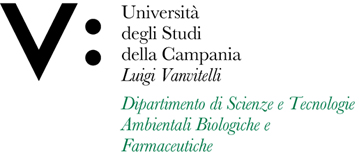Andreina RICCI
Insegnamento di CHIMICA GENERALE E INORGANICA
Corso di laurea magistrale in MATEMATICA
SSD: CHIM/03
CFU: 8,00
ORE PER UNITÀ DIDATTICA: 72,00
Periodo di Erogazione: Secondo Semestre
Italiano
| Lingua di insegnamento | ITALIANO |
| Contenuti | Gli argomenti trattati nel corso riguarderanno: |
| Testi di riferimento | Fondamenti di Chimica Generale- Raymond Chang, Kenneth Goldby. Mc Graw Hill Ed. |
| Obiettivi formativi | Il corso si propone di fornire le conoscenze chimiche di base e gli strumenti per la comprensione delle trasformazioni chimiche della materia. |
| Metodologie didattiche | Il corso prevede lezioni ed esercitazioni di stechiometria in aula ed esercitazioni pratiche in laboratorio |
| Metodi di valutazione | Modalità di apprendimento: La verifica del livello di apprendimento consisterà in una prova scritta che sarà effettuata alla fine del corso o sarà eventualmente frazionata in tre prove di verifica scritte durante il semestre, e in un colloquio orale. Se l’esito delle prove di verifica scritte risulterà superiore o pari alla sufficienza (15/30), si accederà ad un colloquio orale che sarà tradotto in voto per l’esame di Chimica. Concorrerà al giudizio finale anche la valutazione delle relazioni di laboratorio. |
| Programma del corso | LA STRUTTURA DELLA MATERIA: |
English
| Teaching language | Italian |
| Contents | The topics covered in the course will include: |
| Textbook and course materials | Fondamenti di Chimica Generale- Raymond Chang, Kenneth Goldby. Mc Graw Hill Ed. |
| Course objectives | The course aims to provide fundamental chemical knowledge and tools for understanding the chemical transformations of matter. |
| Teaching methods | The course includes classroom lectures and stoichiometry exercises, as well as practical laboratory sessions. |
| Evaluation methods | Learning assessment: The evaluation of learning level will consist of a written exam, which will be conducted either at the end of the course or may be divided into three written assessment tests throughout the semester, along with an oral examination. If the results of the written assessment tests are equal to or above the pass mark (15/30), the student will proceed to an oral examination, which will be translated into a final grade for the Chemistry exam. The evaluation of laboratory reports will also contribute to the final assessment. |
| Course Syllabus | THE STRUCTURE OF MATTER |








